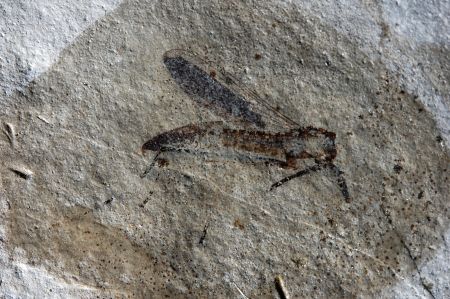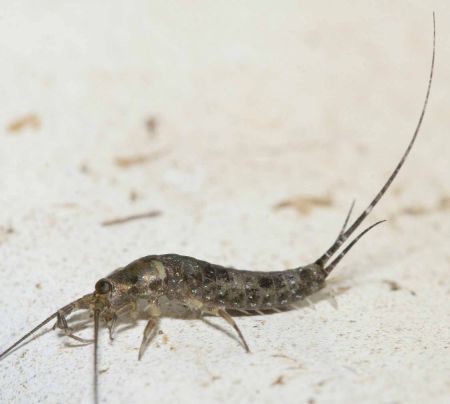Insects
In 1998, researchers at the University of Milan discovered the first fossil insect belonging to the group of Ephemeroptera: Tintorina, commonly known as the “mosquito” of Monte San Giorgio. The discovery of Tintorina is very important because it is the first finding of insects at MSG, and shows it was already highly diversified by the Middle Triassic. In 1999 the team at the University of Zurich also found two new insects (a coleopteran and a dragonfly, the study of which is still on-going) in older beds. In 2010, the Museo cantonale di storia naturale of Lugano found fossil remains of three wingless insects of the genus Dasyleptus. This genus belongs to an extinct subgroup of the jumping bristletails (Archeognatha), the Monura, which until then was thought to have disappeared a long time before, in the mass extinction at the end of the Permian (252 million years ago). Dasyleptus shows significant similarities with the modern-day genus Petrobius, a small inhabitant of coastal rocks that feeds mainly on algae and is known to be an agile runner and jumper. The comparison with modern forms leads to the conclusion that these insects were living on the mainland and were common along the coast.
Tintorina, Kalkschieferzone, 15 mm, © MCSN, photo R. Stockar

Dasyleptus, Kalkschieferzone, 15 mm, © MCSN, photo R. Stockar

Petrobius, © Donald S. Chandler, University of New Hampshire





